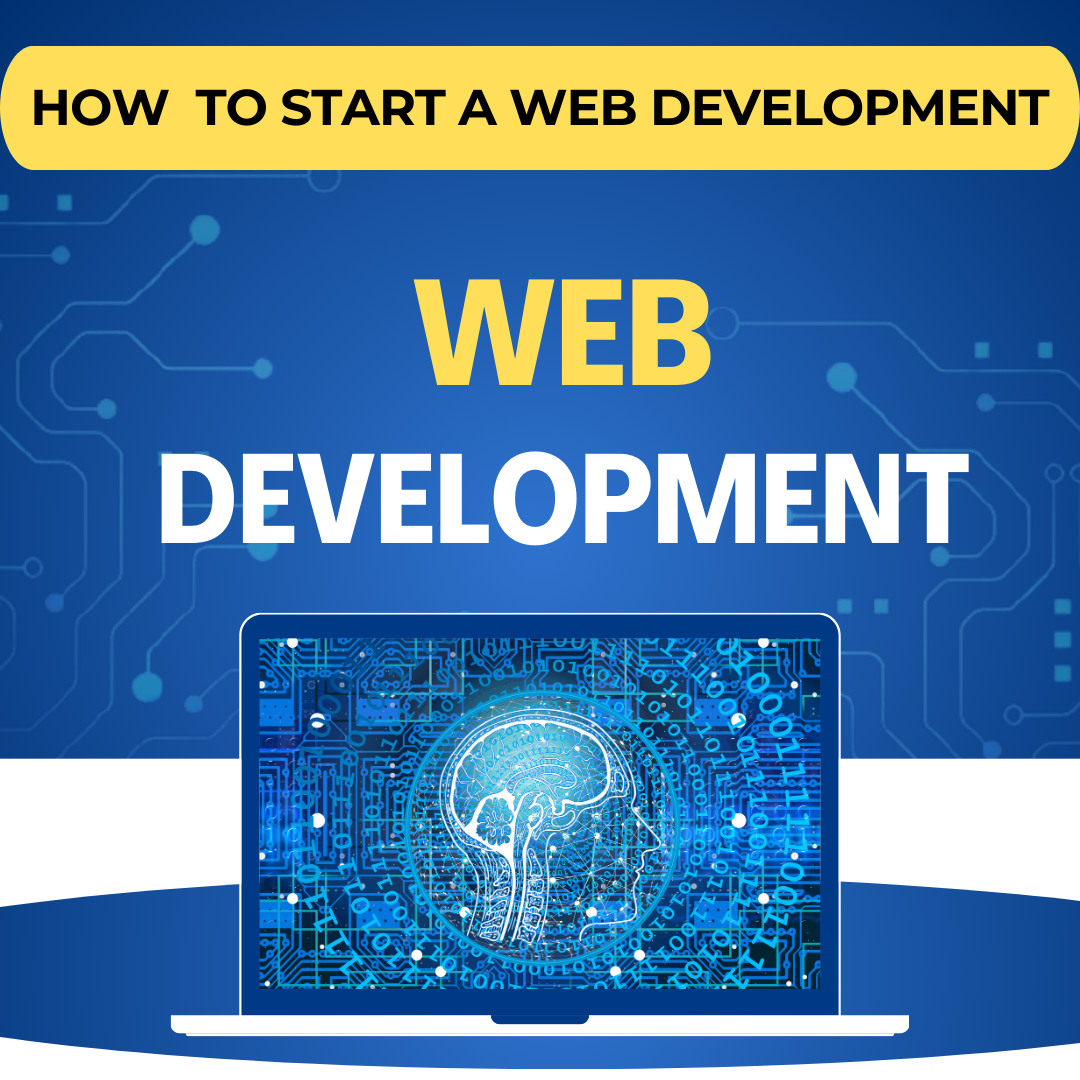How to Start a Web Development in 2025?
The following guide will help you get started in the exciting and rapidly expanding field of web development, which involves building and maintaining websites:
1. Understand Web Development Basics : Web development can be divided into two main categories:
* Frontend Development, which focuses on the client side (what users see and interact with)
*Backend Development, which handles the server side (logic, database, and application performance),
*Full-Stack Development, which is a combination of frontend and backend skills.
2. Understand the Basic Technologies
Fundamentals of Frontend:
*A webpage's structure is defined by HTML (HyperText Markup Language).
*Layout and styling are done with CSS (Cascading Style Sheets).
*Interactivity is added by JavaScript (JS).
Fundamentals of Backend
*Start using a language like PHP, Ruby, Python, or JavaScript (Node.js).
*Databases: Learn NoSQL for non-relational databases like MongoDB or SQL for relational databases.
Additional :
You can learn Git and Github which will help to manage your code and will help to track your code throughout your coding journey
3. Configure Your Environment for Development
*IDE or text editor: Atom, Sublime Text, and Visual Studio Code are popular options.
*Developer Tools for the Browser: Chrome DevTools is an effective debugging tool.
*Install Node.js: Helpful for package management and JavaScript development.
4. Begin construction projects
The best way to learn is by doing. Start with easy projects and work your way up to more sophisticated ones:
*Landing Page: Work on your HTML and CSS skills.
*JavaScript should be added to the to-do list app for interactivity.
*Blog Application: Use a database and backend development.
5. Gain knowledge of responsive design
To make your website responsive, use CSS Media Queries.
For faster styling, learn frameworks like Tailwind CSS or Bootstrap.
6. Get Knowledge about Frontend Frameworks
Frameworks are frequently used by contemporary web apps to increase efficiency:
*React: A popular JavaScript library for developing user interfaces.
*Angular or Vue.js are alternatives to React that each have advantages of their own.
7. Examine Backend Frameworks
After mastering a backend language, become familiar with frameworks:
Express.js is a Node.js framework that is quick.
Django (Python) or Ruby on Rails: Full-featured backend solutions.
8. Management of Databases
Relational databases include PostgreSQL and MySQL.
NoSQL Databases: MongoDB, Firebase.
9. Make Your Websites Live
Free hosting options include Vercel (frontend projects), Netlify, and GitHub Pages.
Full-stack hosting: Heroku, Render, or AWS.
10. Remain Current and Continue to Learn
Keep up with web development groups and blogs such as Stack Overflow, CSS-Tricks, and MDN Web Docs.
Participate in groups or forums on websites such as LinkedIn, Reddit, or Discord.
Create a portfolio and ask for comments.
11. More Complex Subjects to Examine
APIs: Learn how to create and consume RESTful APIs.
Authentication: Use OAuth or JWT for secure logins.
Testing: Tools like Jest or Selenium guarantee your application functions as intended.
Web Performance: Optimize with technologies like Lighthouse.
12. Develop Your Portfolio
Utilize a personal website to showcase your projects.
Provide a range of projects that showcase various abilities.
In conclusion,
Web development can be intimidating at first, but it becomes more doable when broken down into steps. Prioritize creating projects, learning the fundamentals, and trying out new tools and methods. You'll grow skilled and prepared to take on obstacles in the real world with regular practice!

